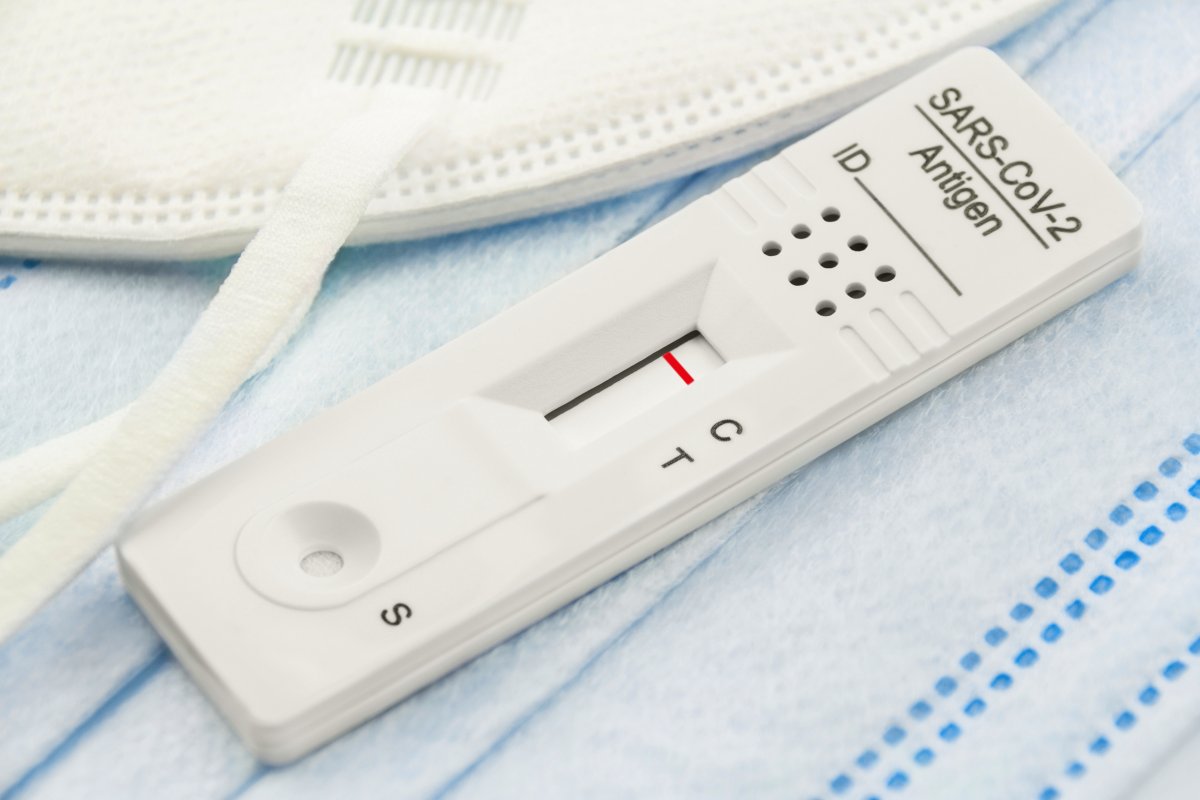Is there a second line now or not? Many users of pregnancy and corona rapid tests have asked themselves that. As quickly as the check boxes work, the result can sometimes be ambiguous. In these tests, capillary force pulls the body fluid to be tested through a strip of paper until the biomolecules sought are bound by reporter molecules and displayed as a color reaction. In addition, some rapid tests only respond to larger amounts of the biomolecules to be tested.
Therefore, scientists around the world are working to combine the speed and low cost of these paper-based microfluidic diagnostic tests with the accuracy and sensitivity of electronic measuring systems that allow a clear digital display. Microfluidics experts led by Andrew deMello and nanosurface experts led by Chih-Jen-Shih at the Swiss Federal Institute of Technology (ETH) in Zurich have taken a big step in this area.
Cellulose becomes graphene
They have developed a cheap electro-fluidic rapid test by converting the cellulose in paper test strips into graphs at defined points with finely dosed laser pulses in a laser engraver. These electrode areas, which had become conductive, continued to be wettable. Binding of the sought-after biomolecule triggers an electronic signal instead of a color reaction. This also works at those low concentrations that have caused the unclear results in previous tests.
DeMello emphasizes that the method will not only enable more reliable diagnostic tests that, in addition to the protein detection of rapid pregnancy and disease tests, also display many other biomolecules. It is also possible to detect DNA and RNA in order to identify pathogens or to measure the concentration of low-molecular active substances (small molecules). In addition, the technology platform is also well suited for examining environmental samples such as water, air and soil samples.
In previous attempts to develop quick tests with electronic measuring accuracy, the electrodes were placed on the paper test strips using a wide variety of technologies. However, because such electrodes were water-repellent (hydrophobic), the test liquid could not be transported any further at these points. That’s why the ETH researchers wanted to integrate their electrodes into the paper by making it partially conductive.
use of a laser
“Cellulose is a difficult starting material for electrodes because its high oxygen content makes it very flammable,” explains deMello’s colleague and main developer Léonard Bezinge. Cellulose consists of linked glucose molecules. These sugars can be broken down into their elements carbon, oxygen and hydrogen using a high-energy laser.
Bezinge took two measures to prevent the cellulose from burning into carbon, which would not be conductive, or from being completely destroyed. He protected the paper with a flame retardant and also reduced the intensity of the laser by letting it work in pulses rather than continuously. Due to the reduced energy impact, the carbon atoms rearranged into a graphene-like structure.
But pure graphene would also be water-repellent. Therefore, Bezinge adjusted the laser exposure so that the paper was only partially converted into graphene and some of the oxygen functional groups on the carbon backbone were retained. These groups interact with water so that the electrodes remain wettable and do not disrupt the conduction of the liquid.

The sensors applied to a sheet of paper.
(Image: ETH Zurich / Martin Rütsche)
The new electrofluidic tests are very cheap to manufacture. The researchers were able to accommodate 176 sensors on a single DIN A4 sheet, which means a test unit price of just two cents.
Also determine the concentration of the pathogens
The oxygen groups also have a second advantage. So-called reporter molecules for the biomolecules to be detected can be anchored to them. In the case of Sars-CoV-2 antibody measurements, these would be virus antigens, and antibodies for the detection of the viral spike protein. When the biomolecules bind to the reporter molecules on the electrodes, a measurable voltage is generated. This is proportional to the bound amount of biomolecules.
“Our tests shine especially when you not only need a highly sensitive result, but also a quantitatively highly accurate result,” says Bezinge. “With Covid-19 antibody tests, you not only want to know whether antibodies are present, you want to determine their exact concentration,” the chemical engineer continued.
Among other things, the researchers have developed a rapid Covid 19 test that sends the result to a smartphone via a dongle. In another experiment, the genome of the carcinogenic human papilloma virus HPV16 was detected. The first results are currently available as a preprint, which still has to go through the review process. Another specialist publication on the Covid-19 antibody test is to follow. The ETH researchers already registered a patent for their method last year.

(vs.)
